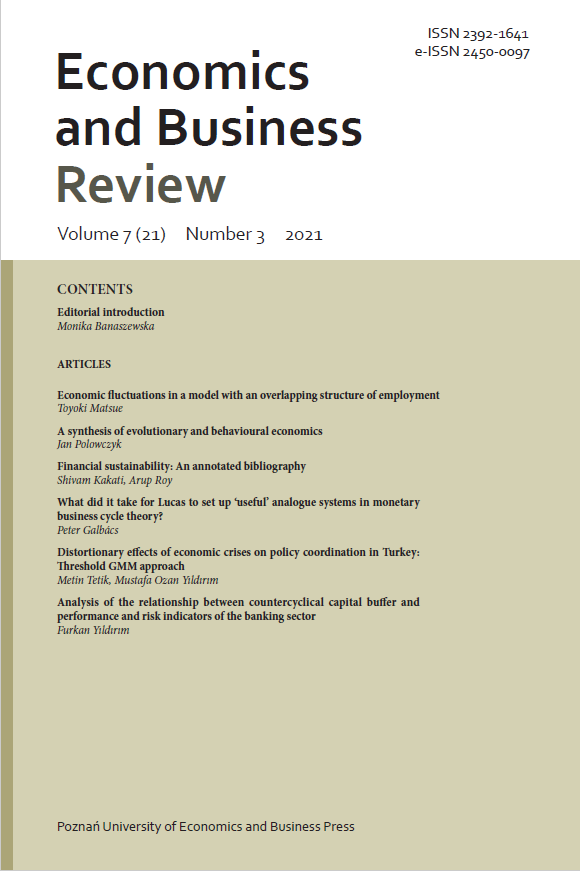ANALYSIS OF THE RELATIONSHIP BETWEEN COUNTERCYCLICAL CAPITAL BUFFER AND PERFORMANCE AND RISK INDICATORS OF THE BANKING SECTOR
ANALYSIS OF THE RELATIONSHIP BETWEEN COUNTERCYCLICAL CAPITAL BUFFER AND PERFORMANCE AND RISK INDICATORS OF THE BANKING SECTOR
Author(s): Furkan YıldırımSubject(s): Economy
Published by: Wydawnictwo Uniwersytetu Ekonomicznego w Poznaniu
Keywords: countercyclical capital buffer; performance indicators; risk indicators; ARDL model; Toda Yamamoto causality test
Summary/Abstract: This study aims to explain the association between the quarterly data obtained over the period 2007: Q2–2020: Q3 for Turkey and the countercyclical capital buffer (CCyB) proposed within the framework of Basel III with banking performance and risk indicators. For this purpose the association among the variables was analyzed using the ARDL model and by performing the Toda Yamamoto (T-Y) causality test. According to the analysis results, it was determined that the CCyB has a statistically significant and positive relationship with the capital adequacy indicators of the banks in the long-run, however, it has a statistically significant and negative relationship with the asset quality risk and currency risk indicators. In the short-run it was determined that the CCyB has a statistically significant and positive relationship with the capital adequacy, profitability and liquidity indicators and similar to the long-term relationship, it has a statistically significant and negative relationship with the asset quality risk and exchange rate risk indicators. According to the causality test results, a statistically significant and unilateral causality running from the indicators of capital adequacy, asset quality and exchange rate risk to the CCyB was detected. The obtained estimation results indicate that the CCyB can be increased by policymakers during the periods when the performance indicators of the banking sector rise, whereas can be decreased by policymakers during the periods when the risk indicators of the sector rise. Furthermore, the results of the study asserted that the CCyB was an appropriate instrument for mitigating the macroeconomic and systemic risks for Turkey.
Journal: Economics and Business Review
- Issue Year: 7/2021
- Issue No: 3
- Page Range: 103-123
- Page Count: 20
- Language: English

